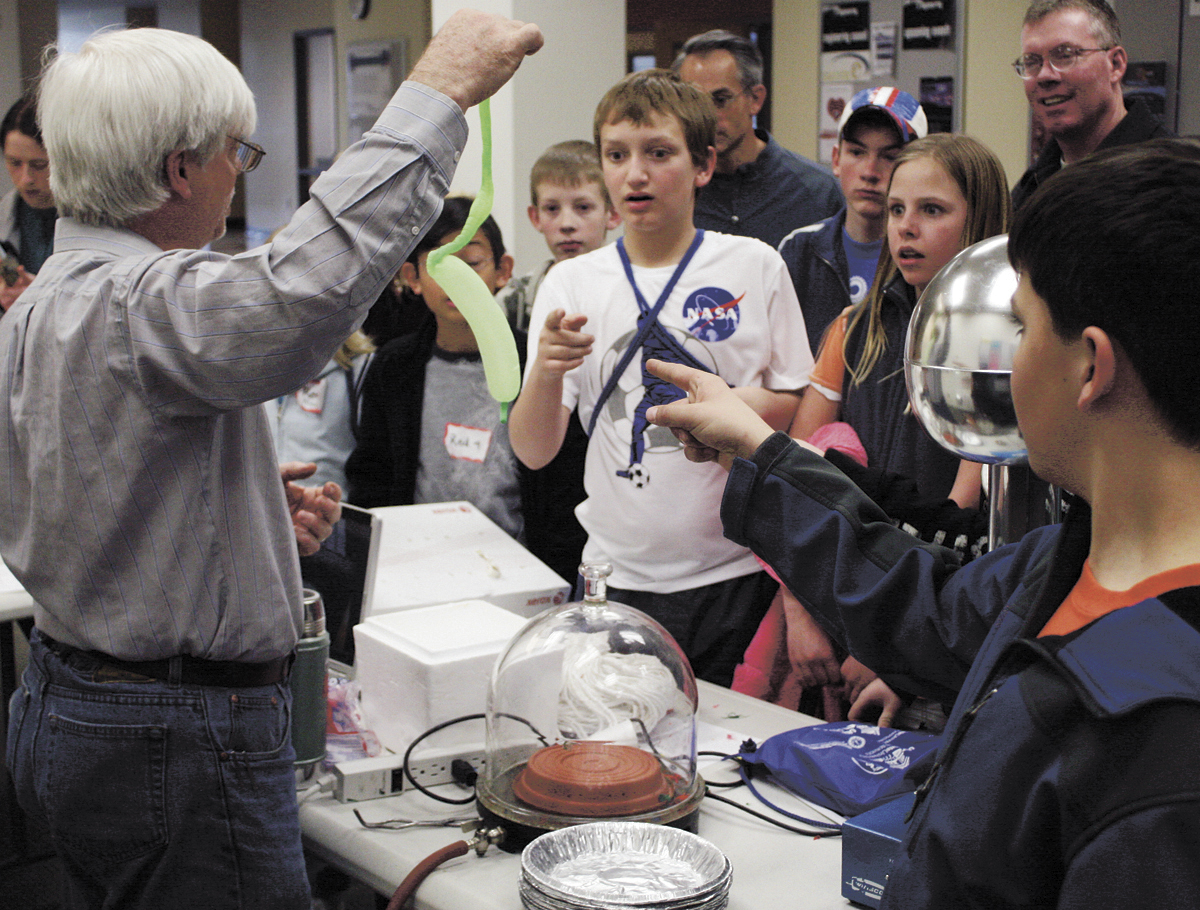NASA scientists awe students
NASA scientists made their way to USU Saturday to show the youth of Cache Valley the potential of careers in the science and help students see that a college career is possible.
Nearly 150 students from middle schools around Cache County attended the program along with their teachers. The program featured mineral samples from NASA missions, hands-on activities and a lecture from Mario Perez, a discipline scientist with the astrophysics division of NASA.
The Society of Hispanic Professional Engineers USU chapter (SHPE-USU) collaborated with NASA and the University of Texas at Brownsville to bring the program to USU. The program aims to encourage students, especially those from ethnic populations. who are usually underrepresented in science, technology, engineering and mathematics (STEM) fields. A growing deficiency in science and math among the nation’s schools is a problem that could cost the U.S. in competition with other nations, said Charles Galindo, a principal scientist at NASA who has helped develop the NASA Space Science Day program.
While USU is only the fourth site nationwide for the program, the need for the U.S. to remain competitive in science and engineering will likely ensure the program’s growth and continuance, said Stephanie Herrera, foundation director for the Society of Hispanic Professional Engineers.
“Given the state of STEM education and the amount of engineers we’re not putting out, it’s definitely going to grow and help build pipelines for corporations and make sure that we can compete in the global market … I don’t like our rankings now,” Herrera said.
In February, the National Assessment of Educational Progress released findings from a national study indicating that only about one-third of American students in elementary and secondary education have a firm grasp of basic scientific concepts. Further, the study found that African-American and Hispanic students show an ongoing concern among educators of an overall achievement gap.
Omar Castillo, president of SHPE-USU, said he’s concerned about the under-representation of Hispanic students in science and engineering.
“They are not even attending college, some of them,” Castillo said. “They don’t think that they can succeed in the STEM fields. We want to show them that success is an option and is possible in the STEM fields through this activity.”
Castillo said he hopes the community will view the program as an asset and help establish the NASA Space Science Day as an annual tradition at USU.
The majority of the activities were conducted by college students volunteering through SHPE-USU, in groups of about 10 middle school students. The volunteers had, in weeks prior, received training from NASA personnel on how to conduct the activities, which ranged from planning scenarios for space experiments to seeing who could design and construct the best device out of household items to throw ping-pong balls.
Thane Hutchinson, a seventh-grade science teacher at Mount Logan Middle School, said the opportunity for his students to meet the volunteers from SHPE-USU was a valuable part of the experience.
“It’s good for them to see diversity in college, because we have a pretty high diversity at Mount Logan Middle School,” Hutchinson said. “The content is important, but I want them to see that coming to college is possible.”
Volunteers from other organizations, including the USU Get Away Special (GAS) team and the Latinos in Action club of Sky View High School, helped at the event.
In order to host the NASA Space Science Day, leaders in SHPE-USU submitted a grant proposal, competing with chapters in other universities.
“From (their proposal) we determined that USU was probably the best candidate that we had,” said Jose Perez, national project manager for the NASA Space Science Day program.
Of SHPE-USU, Perez said, “They had a very strong foundation of members that were extremely dedicated to providing a service to the community, and that is something we were able to recognize when we met with them.”
– steve.kent@aggiemail.usu.edu

